- Home
- H A CULLEY
After Bannockburn
After Bannockburn Read online
AFTER BANNOCKBURN
By
H A Culley
Part Three of the Robert the Bruce Trilogy
Published by Orchard House Publishing
First Kindle Edition 2014
Text copyright © 2014 H A Culley
The author asserts the moral right under the Copyright, Designs and Patents Act 1988 to be identified as the author of this work.
All Rights Reserved. This book may not be reproduced in any form, in whole or in part, without written permission from the author.
Cover image by kind permission of Kim Blair ©
TABLE OF CONTENTS
Author’s Note
List of Principal Characters
Chapter One – Aftermath
Chapter Two – The Invasion of Ireland
Chapter Three – A Tale of Two Squires
Chapter Four – The Taking of Berwick
Chapter Five – The War at Sea
Chapter Six – The Battle of Faughart
Chapter Seven – The Defence of Berwick
Chapter Eight – The Chapter of Myton
Chapter Nine – The Declaration of Arbroath
Chapter Ten – Civil War in England
Chapter Eleven – Invasion of the Wasteland
Chapter Twelve – The Battle of Byland Moor
Chapter Thirteen – The Truce of Bishopsthorpe
Chapter Fourteen – The Treaty of Corbeil
Chapter Fifteen – The Abdication of Edward II
Chapter Sixteen – The Last Battle
Chapter Seventeen – Peace at Last
Chapter Eighteen – The Heart of a Hero
Author’s Note
The Origins of the Wars of Scottish Independence
This is the final instalment of three novels about the life and times of Robert de Brus, more commonly known as Robert the Bruce, and his key role in the Wars of Scottish Independence. The wars between England and Scotland ran sporadically from 1296 to 1328 and from 1332 to 1357. King Robert died in 1329 and this trilogy covers the background to the conflict and the first war up to Bruce’s death.
The Path to the Throne covers Robert’s initial ambivalence to the Scottish cause, his decision to fight for Scottish independence and the reasons behind it, his coronation at Scone on 25 March 1306 and the disastrous aftermath.
The second book, The Winter King, tells of the eight years between his flight into hiding after his coronation up to his triumph over the English at Bannockburn on 24 June 1314. This is a period of small victories, severe defeats and guerrilla warfare when King Robert struggled to keep the flame of Scottish independence alight.
The final book in the trilogy, After Bannockburn, is set in the last fifteen years of Robert’s reign when he strove to unite Scotland under his rule and to make it independent from England. The tale is mainly told through the eyes of two brothers, Simon and Edgar, who were born in Northumberland but who became hostages before rising to be Scottish knights. They are fictional but most of the others who appear in the story are historical characters.
The Bruce family are thought to have originated in Brix near Cherbourg in Normandy and to have come to England with William the Conqueror in 1066. Robert de Brix was granted manors in Yorkshire and County Durham. His son was given land in Annandale by David I, King of Scots, and this was inherited by his second son, Robert de Brus; the first son, Alan, inheriting his English lands. Robert also inherited some manors in England. His grandson, another Robert, married a daughter of David, Earl of Huntingdon. She was the niece of William the Lyon, King of Scots, thus establishing his descendants’ claim to the throne of Scotland.
With the death of Alexander III of Scotland in 1286 without a male heir, the throne went to the three-year old Margaret, Maid of Norway, the granddaughter of the Scottish king. In 1290 the Guardians of Scotland, who had been appointed to govern the realm during the young Queen's minority, drew up a marriage contract between Margaret and the then five-year old Edward of Caernarvon, the heir to the English throne. Although any offspring of this marriage would be heir to the crowns of both England and Scotland, it was agreed that the latter should remain separate and not be subject to the English Kingdom.
In September 1290 the young Queen Margaret died in Orkney on her way to Scotland in mysterious circumstances, leaving Scotland without an undisputed successor to the kingdom. Edward I of England was asked to decide between various competitors for the Scottish throne in a process known as the Great Cause. One of the strongest claimants was John Balliol, Lord of Galloway, who forged an alliance with the powerful Bishop of Durham, the representative of Edward I in Scotland, and began styling himself 'heir of Scotland’. While another, Robert Bruce, 5th Lord of Annandale, cited his appointment as heir by Alexander II before his son, Alexander III, was born. There were twelve other claimants; all descended from various Kings of Scots but there were only four serious contenders:
· Floris, Count of Holland – descended from David I through his great-granddaughter, Ada.
· John Hastings – also descended from David I through his great-granddaughter, Ada.
· John Baliol - descended from David I through his great-granddaughter, Margaret.
· Robert de Brus - descended from David I through his great-granddaughter, Isabella.
Of these, John Balliol had the best claim on the basis of primogeniture as Margaret was of the senior line. Robert de Brus, grandfather of King Robert I, whose claim was based on tanistry - the Gaelic system for passing on titles and lands - was the closest in kinship as he was Isabella’s son. Balliol was Margaret’s grandson.
When Edward announced his decision as arbiter of the Great Cause and John Baliol was pronounced as king at Berwick upon Tweed in November 1292, it looked as if the struggle for the throne might be over. However, Edward demanded that Baliol recognise him as his feudal superior, describing himself as Lord Paramount of Scotland. He repeatedly undermined Baliol, insisting that all important decisions be referred to him.
The Scots soon revolted against this situation and King John Baliol was forced to abdicate by Edward. John was exiled and lived out his days on his family manor at Hélicourt in France. A new panel of Guardians was appointed by the Scottish nobles at Stirling in July 1295 and they went on to conclude a treaty of mutual assistance with France - known in later years as the Auld Alliance.
In retaliation, Edward I invaded. The Wars of Scottish Independence had begun. They continued sporadically for sixty years, with a break between 1328 to 1332. Edward II of England was deposed and murdered in 1327. A year later the Treaty of Edinburgh – Northampton was signed between Edward III and Robert Bruce. A year after that Bruce himself died, leaving his five year-old son as King of Scots.
This novel ends with Bruce’s death but twenty five years of conflict followed before the wars finally came to an end with the Treaty of Berwick in 1357. Scotland remained an independent country thereafter until the Union of the Crowns in 1603.
There are certain words and names which might be unfamiliar to the reader. I list a few of these below:
Ague - A medieval term for a febrile condition in which there are alternating periods of chills, fever, and sweating.
Braies - a type of trousers generally reaching to the knees or mid-calf. They could be made of leather, wool, cotton or linen. Later they became briefer and were worn as undergarments beneath hose.
Buckler - a small round shield, 15 to 45 cm (6 in to 18 in) in diameter with a single handhold which was gripped in the left fist.
Caparison - A cloth covering for a war horse. It was divided in two at the saddle and usually covered the horse from neck to rear, reaching down to the fetlock. It usually displayed the knight’s heraldic achievement (often misnamed coat of arm
s) but not always. Later caparisons covered the horse’s head as well.
Chausses - chain mail leggings covering the legs exposed below the hauberk.
Coif – The chain mail hood that was worn under the helmet or helm, and lined in leather or quilted cotton to protect the head.
Conroi - a troop of cavalry, usually knights.
Constable - person in charge of a castle in the absence of its lord. In particular, he was responsible for its defence.
Courser – a type of war horse, more common and less expensive than the destrier and preferred by some as they were lighter and faster, whilst still being quite strong.
Crenulation – the top portion of a fortified wall which is composed of merlons and embrasures. Also called battlements.
Destrier - the finest and strongest type of warhorse. These horses were usually stallions, bred and raised from a foal specifically for use in war. They were comparatively expensive.
Embrasure - the lower part of the top of a wall between two merlons that, together, form part of a crenulation.
Gambeson - a heavily quilted coat worn under the outer defence of chain mail to prevent it from chafing, or else worn on its own where it gave some protection from cuts and arrows.
Fealty - the loyalty owed by a vassal (see below) to his feudal lord.
Galloglass - armoured foot soldiers who served primarily as bodyguards to Celtic chieftains. They were hand-picked for their strength and massive size, and they would usually carry a battle axe or a halberd. Bands of Galloglasses were also available for hire as mercenaries.
Gallovidian - A person from Galloway; can also called a Galwegian.
Garron - a type of horse or pony. The term was used in Scotland and Ireland and referred to an undersized beast. In Scotland a garron was also one of the types of Highland pony
Halberd - an axe blade topped with a spike mounted on a long shaft between 5 and 6 feet long. It usually had a hook or thorn on the back side of the axe blade for grappling mounted combatants and yanking them from their horse.
Hobelars- a type of light cavalry, or mounted infantry, used in Western Europe during the Middle Ages for skirmishing. They originated in 13th century Ireland, and generally rode light, agile horses or ponies.
Jennet - a smooth-gaited type of horse known for its presence, style and smooth ride.
Kern - Irish or Scottish light-armed foot soldiers. A kern would carry a small round shield of wood called a targe and either a sword or bow and arrows.
Knight’s Fee - an estate or manor held by a tenant in exchange for which he provides one knight, usually himself, to serve his lord for (normally) forty days per year and to serve under him in time of war.
Mangonel – a type of large catapult, smaller that a trebuchet. Mangonels threw projectiles on a lower trajectory and at a higher velocity than the trebuchet. When loaded with a number of small rocks it could be devastating when used against troops in the open.
Mark – a unit of currency in common use in the Middle Ages. It was equivalent to two thirds of a pound Stirling.
Merlon – the upright portion of wall between two embrasures that together form a portion of a crenulation.
Mesnie - the knights forming the regular military component of a noble’s household.
Mormaer - regional or provincial ruler in the early medieval Kingdom of the Scots. In theory, although not always in practice, a Mormaer was second only to the King of Scots. The title was gradually replaced by the Anglo-Norman title of Earl.
Page – a young boy, usually of noble birth, who served as messengers and personal servants in a household. They also learned to ride and commenced basic military training. They were normally aged between eight and thirteen.
Palfrey - the most expensive and highly-bred type of riding horse during the Middle Ages, sometimes equalling the knight's destrier in price. Consequently it was popular with nobles, ladies and wealthy knights for riding, hunting and ceremonial use.
Picquet – a group of sentries posted between a camp and the enemy to give warning of an attack, especially at night.
Quintain – Tilting at the quintain on horseback was a test of skill with a lance and of agility. The rider aimed to ride at the target as fast as possible, hit the centre of the target with his lance as hard as possible, and then avoid the bag of sand which swung round as the target rotated away. Missing the target, or not striking it cleanly, was treated with loud peals of derision, as did being knocked from your horse by the bag of sand.
Rouncey - an ordinary, all-purpose horse. They were used for riding but could also be trained for war. It was not unknown for them to be used as pack horses.
Scutage - the payment under the feudal system which allowed a knight to "buy out" of the military service which was due to his overlord in return for his tenure of land, known as a knight’s fee (see above).
Serjeant - a professional soldier who ranked between a knight and a man-at-arms. Most were mounted though the term was also used for an armoured spearman on foot.
Sheriff - a senior royal official responsible for keeping the peace throughout a shire or county and to collect taxes on behalf of the king.
Schiltron – a compact infantry formation, often circular, of pikemen usually arranged three rows deep so that it resembled a hedgehog.
Spence – Scottish term for larder.
Spencer – the official in charge of the spence in a medieval castle. The spencer doled out what was required to the cook and had to account to the butler for everything used.
Squire – the personal servant of a knight who also undertook military training. Most were knighted on becoming adults at twenty-one, though some became serjeants.
Targe - a concave circular shield similar to a buckler but larger. They were fitted with enarmes on the inside, one adjustable by a buckle, to be attached to the forearm, and the other fixed as a grip for the left hand. These shields were mostly made of iron or iron-plated wood.
Tenant-in-Chief – a noble or churchman who held his lands directly from the king in return for military service when required.
Trebuchet - a type of large catapult which was used to hurl large rocks over a significant distance.
Varlet – a menial servant.
Vassal - a person who holds land from a feudal lord and receives protection in return for homage and allegiance.
Villein - a peasant personally bound to his lord, to whom he paid dues and services, sometimes commuted to rents, in return for his land.
List of Principal Characters
In Alphabetical Order
Historical characters are shown in bold type
Alistair Hamilton – Member of Sir Simon de Powburn’s mesnie.
Angus Og MacDonald - Lord of the Isles and chief of Clan Donald. Ally of Robert Bruce. Later Lord of Lochaber.
Aymer de Valence – Earl of Pembroke.
Bertram Keith – youngest son of Sir Robert Keith, the Marischal of Scotland. Squire to Sir Edward Bruce.
Bridget Forbes – Daughter of Sir John Forbes, later wife of Sir Simon de Powburn.
Catriona Forbes – Heiress of Ayton Manor, later wife of Sir Edgar de Powburn.
Christian MacRuarie – Heiress of Garmoran. Mistress of Robert Bruce. Later his sister-in-law.
Edgar de Powburn – Simon’s younger brother; squire to Sir William Keith.
Edward Bruce – King Robert’s brother. Earl of Carrick and later High King of Ireland.
Edward the Second – King of England, also known as Edward of Caernarvon.
Edward the Third – Succeeded his father as King of England
Elizabeth de Burgh – Daughter of the Earl of Ulster, second wife of Robert Bruce, Queen of Scotland.
Iain Ross – Eldest son of the Earl of Ross; second squire to King Robert.
Ian Logan – Page to Lady Bridget Forbes, later Sir Simon de Powburn’s squire.
James Douglas – Called the Black Douglas and the Good Sir James. Lord of Douglas and one of Robert Bruce’s closest
friends.
John Campbell – Son of Mary Bruce and King Robert’s nephew, later Earl of Atholl.
John de Powburn – Simon and Bridget’s eldest son, later page to the Countess of Moray.
Lachlan Logan – Ian Logan’s younger brother, page to Lady Bridget Forbes. Later squire to Sir Alistair Hamilton.
Malcolm Douglas – Half-brother of Lord James Douglas.
Marjorie Bruce – King Robert’s daughter by his first wife. Later wife of Walter Stewart, High Steward of Scotland.
Michael of Kelso - Member of Sir Simon de Powburn’s mesnie.
Nicholas Sutherland – Squire to Sir Michael of Kelso.
Richard Keith – Marischal of Scotland.
Robert Bruce – King of Scots.
Rollo of Dirleton – Body servant to Sir William Keith, later squire to Sir Simon de Powburn.
Roger Mortimer – Earl of March; English magnate on the Welsh border.
Simon de Powburn – Second squire to King Robert.
Thomas Randolph - Earl of Moray, supporter of Robert Bruce.
William Keith – Sir Richard Keith’s younger brother.
William Lamberton – Bishop of St. Andrews, Primate of Scotland.
Chapter One – Aftermath
Summer 1314
Edgar de Powburn broke off his conversation with his brother, Simon, as James Douglas and forty or fifty horsemen cantered past them. He raced to retrieve his packhorse from the baggage train and then set off at a fast canter to catch up with the knight he served: Sir William Keith, captain of James Douglas’ mesnie. Whereas Douglas merely nodded a greeting as Edgar fell in behind him, William was a little more loquacious.
‘Welcome, Edgar. For a moment there I thought that I had lost my squire!’
‘My apologies, Sir William. I was just making sure that my brother had survived the battle unscathed.’

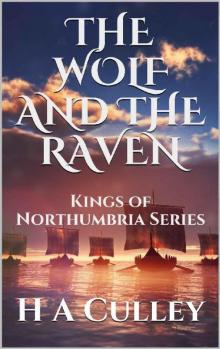 The Wolf and the Raven
The Wolf and the Raven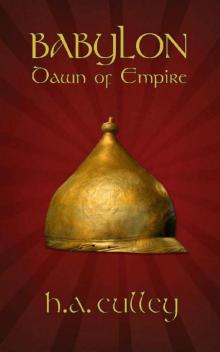 Dawn of Empire
Dawn of Empire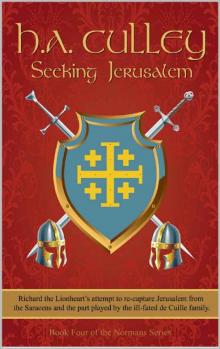 Seeking Jerusalem
Seeking Jerusalem The Strategos
The Strategos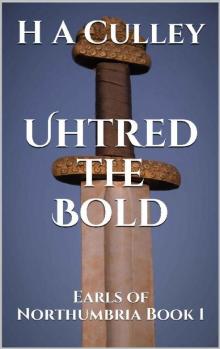 Uhtred the Bold
Uhtred the Bold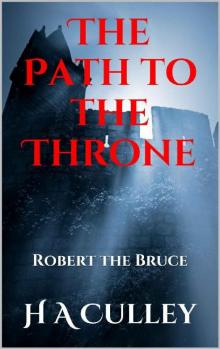 The Path to the Throne
The Path to the Throne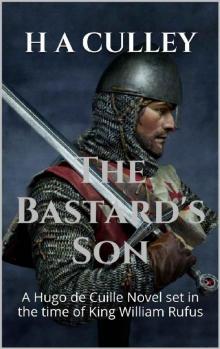 The Bastard's Son
The Bastard's Son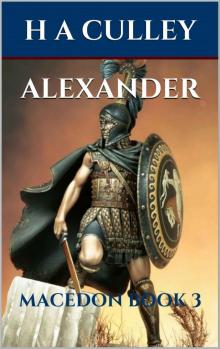 Alexander
Alexander The Great Heathen Army
The Great Heathen Army The Sacred War
The Sacred War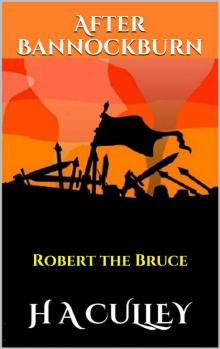 After Bannockburn
After Bannockburn Caging the Lyon
Caging the Lyon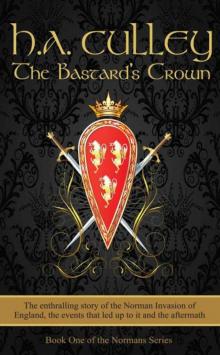 The Bastard's Crown
The Bastard's Crown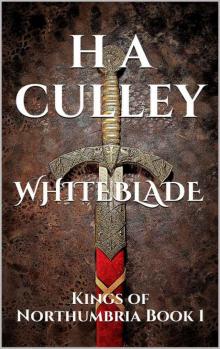 WHITEBLADE
WHITEBLADE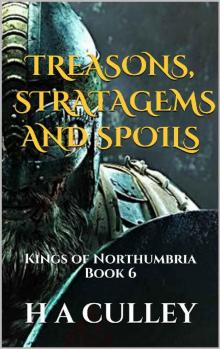 TREASONS, STRATAGEMS AND SPOILS: Kings of Northumbria Book 6
TREASONS, STRATAGEMS AND SPOILS: Kings of Northumbria Book 6 THE POWER AND THE GLORY: Kings of Northumbria Book 4
THE POWER AND THE GLORY: Kings of Northumbria Book 4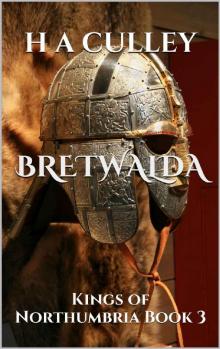 BRETWALDA: Kings of Northumbria Book 3
BRETWALDA: Kings of Northumbria Book 3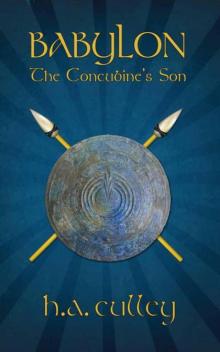 The Concubine's Son
The Concubine's Son The Fall of the House of Æthelfrith: Kings of Northumbria Book 5
The Fall of the House of Æthelfrith: Kings of Northumbria Book 5 TREASONS, STRATAGEMS AND SPOILS
TREASONS, STRATAGEMS AND SPOILS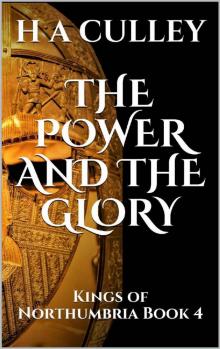 THE POWER AND THE GLORY
THE POWER AND THE GLORY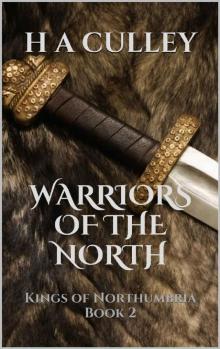 WARRIORS OF THE NORTH
WARRIORS OF THE NORTH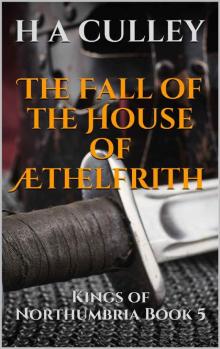 The Fall of the House of Æthelfrith
The Fall of the House of Æthelfrith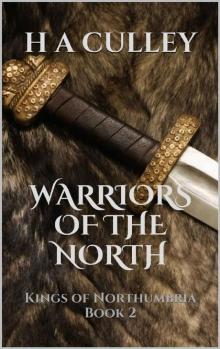 WARRIORS OF THE NORTH: Kings of Northumbria Book 2
WARRIORS OF THE NORTH: Kings of Northumbria Book 2 WHITEBLADE: Kings of Northumbria Book 1
WHITEBLADE: Kings of Northumbria Book 1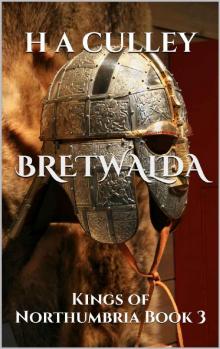 BRETWALDA
BRETWALDA